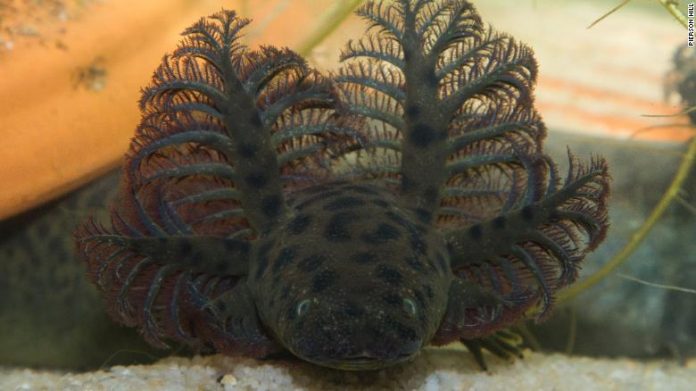A two-foot long salamander that lives in northern Florida and southern Alabama has been identified as a new species.
Named the reticulated siren, it is the first species of its family described since 1944, according to a paper published in the journal PLOS ONE. It also is one of the largest vertebrates described from the United States in more than 100 years.
Scientists had long suspected the amphibian, known locally as a leopard eel, was another species of the Siren genus of salamanders. However, because so few had ever been caught, there wasn’t enough evidence to confirm it.
“It was basically this mythical beast,” David Steen, a wildlife ecologist at the Georgia Sea Turtle Center and co-author of the study, told the National Geographic.
Before the reticulated siren, known scientifically as Siren reticulata, there were two known species in the Siren genus.
The lesser siren can grow from 12 to 27 inches and lives throughout the southern United States into Mexico and along the Mississippi River to Michigan.
The greater siren is one of the largest salamanders in the world. It can grow to be three feet long. It is usually found along the Atlantic and Gulf coasts from Maryland to Alabama, including all of Florida.
Examples of what is now known as the reticulated siren have been stored in museums since the 1970s, and their odd features have been described by scientists before.
Sean Graham, a co-author of the study, told the New York Times, “The whole thing was kind of a campfire story. I was hearing rumors about it…, and then years would go by and I would never see a description of the species.”
Graham, now a biologist at Sul Ross State University in Texas, teamed up with Steen at Auburn University in 2008 to pursue the new species.
Finding creatures that live in mucky bottoms of swamps and ponds is no easy task.
While trapping turtles at Florida’s Eglin Air Force Base in September 2009, Steen finally captured his first reticulated siren.
Nearly five years later, three more specimens were caught in a freshwater marsh next to Lake Jackson in Walton County, Florida.
DNA testing confirmed the specimens were a new species. Like other sirens, reticulata lost its hind legs over millions of years of evolution. They also don’t have eyelids. They do have gills that absorb oxygen. Scientists think they eat insects and mollusks.
David Wake is an evolutionary biologist at the University of California, Berkeley, who specializes in salamanders. He told the Times that despite the team’s lack of specimens, “I am convinced that they have identified a previously unnamed species.”
Steen said, “We’re hoping that one of the outcomes of this study getting out there is that it gets on people’s radar screens — funding agencies, state agencies — and they will begin to prioritize the work that is needed to fully understand the biology and conservation of this animal.”








